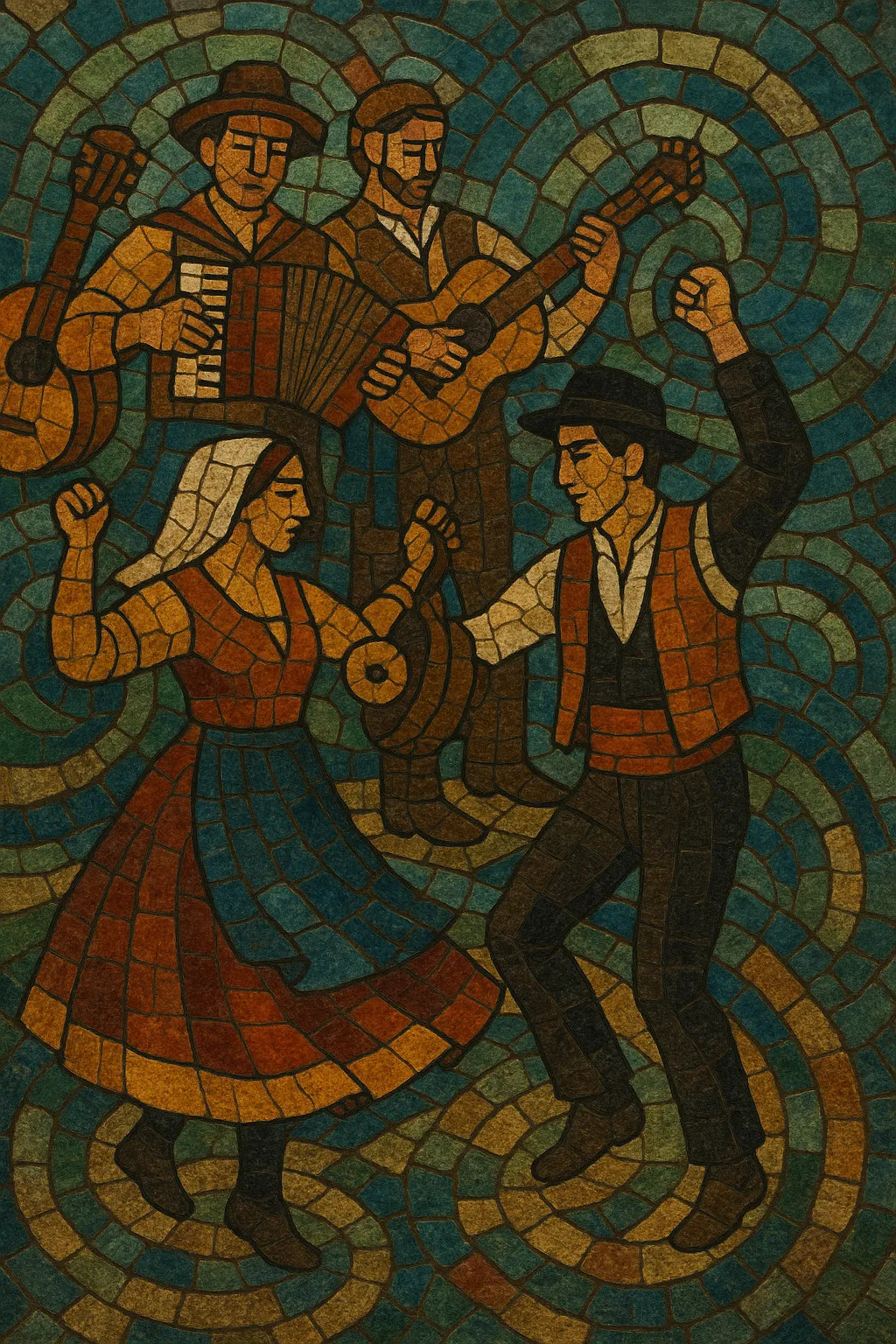Vira is a lively Portuguese folk dance and song form, most closely associated with the Minho and Douro Litoral regions in the north of Portugal. The name “vira” (to turn) alludes to the turning motions of the couples and to the dance’s circular formations.
Typically set in a quick triple meter reminiscent of a brisk waltz, the vira features a strong accent on the first beat and a buoyant, forward-driving feel. Melodies are usually major or Mixolydian, carried by voices and bright folk instruments such as concertina (accordion), cavaquinho, and regional guitars (violas), with bombo (bass drum) and caixa (snare) underpinning the rhythm.
Socially, the vira is performed by pairs facing each other, often without touching, engaging in turns, stamps, claps, and call-and-response singing. Its strophic verses (quadras) are witty, romantic, or celebratory, and the dance is central to regional festivals and rancho folclórico performances.
The vira emerged in northern Portugal, particularly Minho and the Douro Litoral, during the 19th century, although its folk antecedents are likely older. As a communal dance linked to local festivities, it crystallized within rural social life alongside other Iberian circle and pair dances. The term “vira” reflects both the characteristic turning in the choreography and the dynamic, rotational structures of the dance lines.
By the late 1800s, vira repertoire and steps had standardized in community practice and in early rancho folclórico groups. Musically, a vigorous triple meter with a marked downbeat encouraged stamping and clapping figures, while singers traded strophic verses using catchy, diatonic tunes. Instruments such as concertina, cavaquinho, regional violas (e.g., viola braguesa), bombo, and caixa became emblematic. In certain locales, bagpipes (gaita-de-fole) and fife-like flutes added drones and bright timbres.
The 20th century saw a strong folkloric revival in Portugal, with ranchos formalizing costumes, step vocabularies, and local variants (e.g., Vira Minhoto, Vira de Ponte de Lima, Vira de Famalicão). Radio, recordings, and state-sponsored festivals helped canonize the vira as a national symbol of northern identity. Post-1974, folk-collecting and cultural associations further documented regional tune families and choreography.
Today, the vira remains a living tradition in festivals, folklore competitions, and community gatherings, while contemporary folk and neofolk artists adapt its rhythms and melodies. Its infectious triple-time swing, clapping patterns, and antiphonal vocals continue to influence Portuguese popular styles and stage productions, ensuring the form’s visibility beyond its regional roots.



